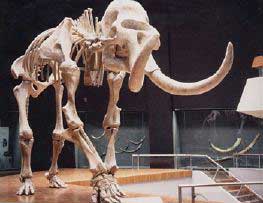Researchers Reconstruct the Rise of the Woolly Mammoth

Image: Courtesy of Adrian Lister
Examine any depiction of Ice Age life and you’re likely to find at least one—a woolly mammoth, that is. But popular appeal notwithstanding, the evolutionary history of this prehistoric beast has proved somewhat difficult to pin down. To that end, findings published today in the journal Science provide some much needed insight.
Working from an extensive Eurasian fossil record going back some 2.6 million years, Adrian Lister of University College London and Andrei V. Sher of the Russian Academy of Sciences studied changes in the skulls and teeth of three successive mammoth species (the last of which was the woolly variety) over time. The researchers documented long stretches of gradual change in all three species, with different features changing at different times. Intriguingly, however, the advanced features—a number of which represent adaptations to grazing—seem to have emerged first in Siberia and only later spread to Europe.
Lister and Sher note that Siberia experienced periglacial conditions earlier, more intensely and for a longer duration than did Europe. “Siberia thereby provided a continuing source of grazing-adapted mammoths, which we suggest acted as a repeated source of evolutionary advancement into periodically glaciated Europe,” they write. The authors further report that the origins of the mammoth species are not particularly clear cut. Thus they may represent populations whose evolutionary paths never fully diverged
Media Contact
More Information:
http://www.sciam.com/news/110201/1.htmlAll latest news from the category: Life Sciences and Chemistry
Articles and reports from the Life Sciences and chemistry area deal with applied and basic research into modern biology, chemistry and human medicine.
Valuable information can be found on a range of life sciences fields including bacteriology, biochemistry, bionics, bioinformatics, biophysics, biotechnology, genetics, geobotany, human biology, marine biology, microbiology, molecular biology, cellular biology, zoology, bioinorganic chemistry, microchemistry and environmental chemistry.
Newest articles

First-of-its-kind study uses remote sensing to monitor plastic debris in rivers and lakes
Remote sensing creates a cost-effective solution to monitoring plastic pollution. A first-of-its-kind study from researchers at the University of Minnesota Twin Cities shows how remote sensing can help monitor and…

Laser-based artificial neuron mimics nerve cell functions at lightning speed
With a processing speed a billion times faster than nature, chip-based laser neuron could help advance AI tasks such as pattern recognition and sequence prediction. Researchers have developed a laser-based…

Optimising the processing of plastic waste
Just one look in the yellow bin reveals a colourful jumble of different types of plastic. However, the purer and more uniform plastic waste is, the easier it is to…



